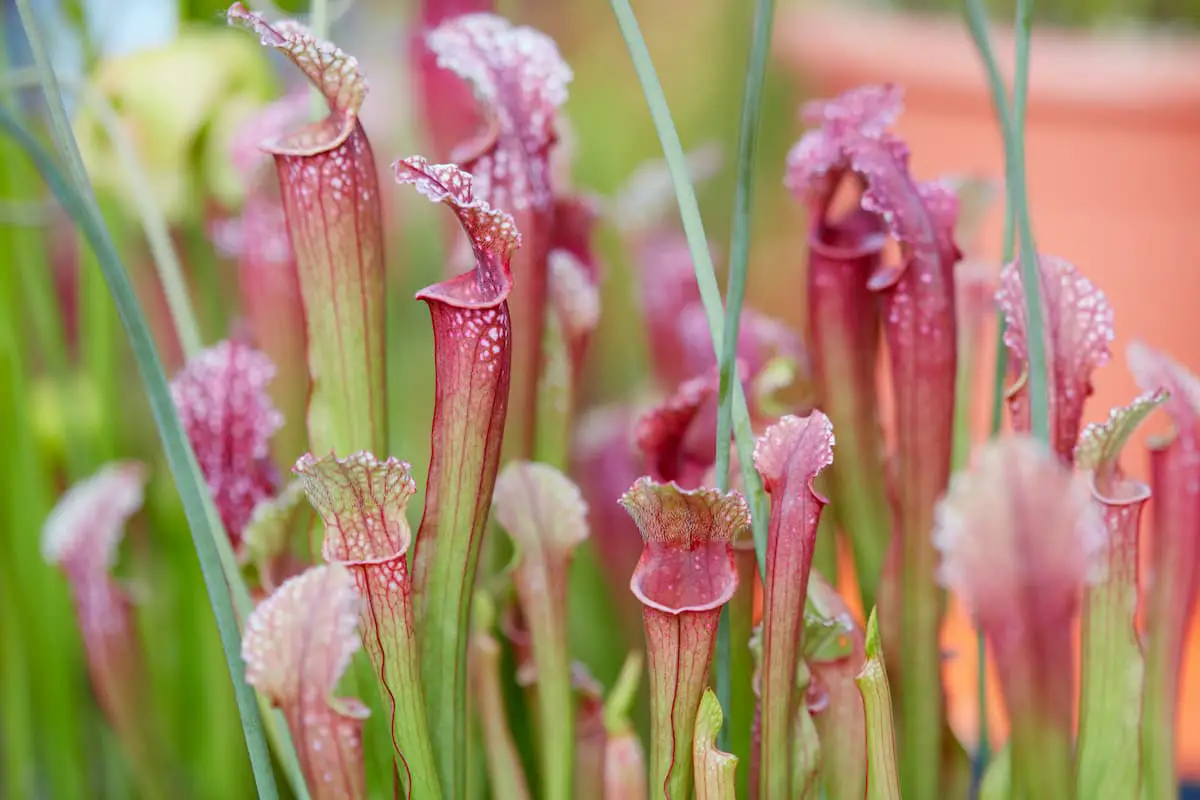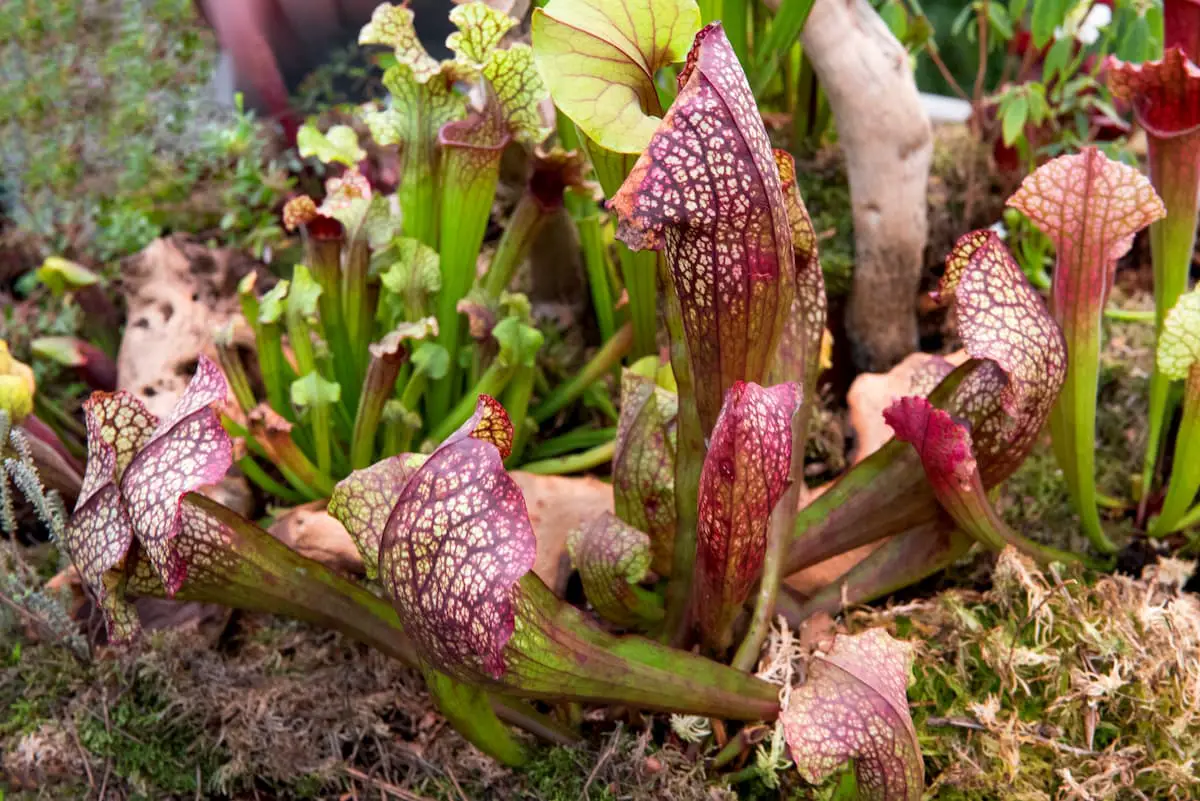Carnivorous or insectivorous plants are plants that are adapted for capturing and digesting insects and other small animals using pitfalls and traps. It is uncommon for them to grow in “regular” soil and instead grow on highly acidic soils.
You may be wondering how many carnivorous plants exist, and the answer is that there are more than 750 species that are or have been currently identified. Some of these species require highly specific growing conditions, while other species are just easily able to grow.
There are a great variety of carnivorous plants in the world, they all fit into some fairly specific trap styles that they use to feed. Below we help you to understand what those are and what the functionality is to keep the plant alive.
A Carnivorous Plant Introduction
The plants are just like the other plants, but the difference is they supplement their diet by eating insects. Carnivorous plants are of many species and have their unique growing conditions and different insect trapping mechanisms.
To ensure the carnivorous plants survive, avoid regular soil, and you can make a pond with adequate liner. Do not try to flood the lake with tap or spring water. Rainwater, melted snow, or distilled water is the safest for irrigation as it hasn’t been treated with a water softener.
The carnivorous plants benefit from sunlight during the day but keep an afternoon shade if you are in sweltering conditions. You can supplement the insects with a dilute solution of organic fertilizer when the insects are inadequate.
There are different types of carnivorous plants, and these are:
Active Traps
You already have had about the Venus Flytrap and the most common of the carnivorous plants. Venus Flytrap has active traps that consist of two clamshell-like halves lined with hairs and nectar glands. The traps are at 45 to 60 degrees, and they may be 3-12 traps and close after two touches. In warm temperatures, one bit and the plants close. An entrapped prey will be digested in 3 to 4 days, depending on its size and its nutritional value. What is the famous Venus Flytrap?
Venus Flytraps
These are plants that capture their meal being the insects in the way of trigger hairs and the obvious scented nectar. On regular days when it is stimulated with an insect, it shuts within half a second. The plant has digestive glands that secrete a red sap and digests the prey. After digestion, the leaf gets a red color and then has a flower-like appearance.
Ten days are required for it to digest the prey, and the leaf opens again, waiting for another insect. A unique thing about the Venus flytrap is that a trap turns black and afterward dies after capturing three or fewer insects. Venus Flytrap has an origin of North and South Carolina in damp areas.
Other examples of carnivorous plants with active traps are Bladderworts and the Water Wheel.
Semi-Active Traps
As their name suggests, they are partially active and not like the active traps. Examples of such plants are the Sundews and Butterworts. These carnivorous plants have sticky glands that cover the upper leaf surfaces.
Unlike an active trap, like the Venus Flytrap, which closes after trapping prey, these plants roll over and cover the victim. One of the most well-known plants with a semi-active trap is the Sundew.
Sundew
The Sundew is a new plant with green and red leaves that are covered with mucus-like droplets that sparkle in the sunlight. The leaves are mostly flat and have little tentacles or stalked glands. Sundews are primarily distributed in the tropical and temperate regions. It is of the genus Drosera out of the 152 species of that genus.
- Sundews (Drosera)
The stalked glands on the leaf margins are longer and trap the prey, and those at the center are short and also do the same work. The tentacles move towards the entrapped victim when cells on the stalk multiply, and then the stalk bends towards it. Sundews grow in various climates around the world.
Another example is the butterwort with a semi-active trap.
Butterwort
The butterwort has leaves that are narrow and elongated with curled edges. The inner surface of the butterwort has tiny glands, and like the Sundew, it has mucus-like droplets that shine when there is sunlight. Their unique character is that they can’t be easily recognized and are pale yellow-green.
During the flowering season, that is the time they can be noticed and will not look like other plants. When prey is stuck on the leaves, they curl over the insect in two hours, and then digestion starts.
There is also a parasitic fungus that has sticky semi-active traps known as Endocahleus asteroids. Its branches may break and attach to a host. The fungus then, in a surprising way, grows more branches after killing the prey and waits for another host.
Passive Traps
Passive trap carnivorous plants have many examples such as Pitcher plants, Cobra Lily, Nepenthes, and some Bromeliads. These passive traps do not have any motion in catching their prey. They are therefore known as the inactive traps and can be classified into “pitfall,” “lobster pot,” and “pigeon” traps. The pitcher plant is the most common, and let’s looks at it.
Pitcher plants
The pitcher plants are like any other plants in that they have attractive trap leaves that are in tube-like shape and have a hood at the top. To attract insects, the pitcher plant has nectar that lures them to enter the pitcher opening. However, the nectar is intoxicated, and it disorients the insects and ends up falling into the trap.
- Monkey Cups (Nepenthes)
- Marsh Pitchers (Heliamphora)
- Australian Pitcher Plant (Cephalotus)
It has hair that allows the insect to find itself in the narrow tube where enzymes in the digestive glands digest it. The prey is understood, and the pitcher plant absorbs the nutrients. Another exciting thing is that the smell of the decomposing prey in a way also attracts other insects to the traps.
Carnivorous plants are the most interesting plants that you can have in your garden. Remember, in cold climates, the carnivorous plants may need protection, maybe using a loose straw covered with landscape cloth to keep the straw in place. The fabric will ensure that there is a free flow of rainwater. Be always aware of the soil that you want the plants to grow, and you can have it tested to ensure their survival.
Final Thoughts on How Many Carnivorous Plants Exist
There is a great option available for you to start growing if you are unsure whether you should or what one would be the best for you. I would suggest learning more to ensure you choose one which is fit for your climate as this will make raising them.
- Monkey Cups (Nepenthes)
- Sundews (Drosera)
- Marsh Pitchers (Heliamphora)
- Australian Pitcher Plant (Cephalotus)
While there is a great amount of choice available on Amazon the plants themselves you are much safer getting from a real person on a service like Etsy. There are too many stories about Amazon for myself but if you are interested check them out here!



Leave a Reply